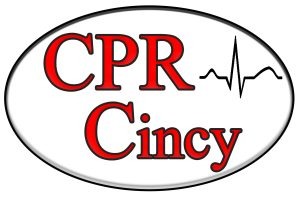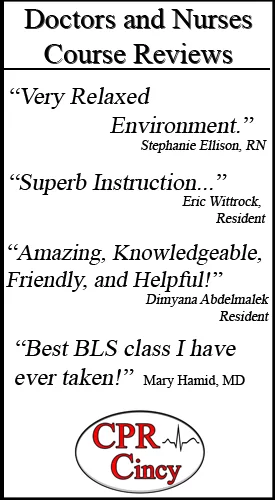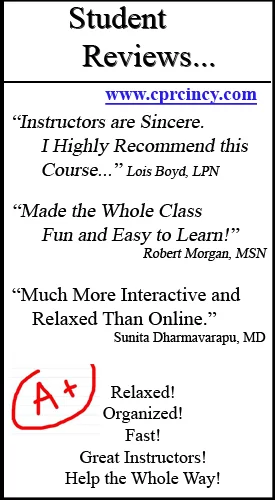Cardiopulmonary Resuscitation (CPR) is a vital skill that can make a crucial difference in saving lives during emergencies. The American Heart Association (AHA) certification adds a layer of credibility to CPR training, signifying a commitment to high standards in life-saving techniques. This article explores the importance of CPR and AHA certification, highlighting CPR Cincinnati as a trusted AHA training site.
CPR is a life-saving technique that can sustain a person’s life until professional help arrives. AHA certification elevates the significance of CPR training, ensuring that individuals are equipped with the latest techniques and adhere to the highest standards in emergency response.
The AHA is a globally recognized organization dedicated to promoting cardiovascular health. Its certification is widely regarded as setting the standard in CPR training. AHA certification not only enhances one’s skills but also instills confidence in their ability to respond effectively in critical situations.
CPR Cincinnati: A Trusted AHA Training Site
CPR Cincinnati stands out as a reliable AHA training site, providing comprehensive CPR certification courses. With a commitment to excellence, CPR Cincinnati offers a conducive learning environment and highly qualified instructors to guide individuals through the AHA certification process.
The AHA’s mission extends beyond providing CPR certification; it aims to build healthier lives free of cardiovascular diseases and stroke. As a leader in cardiovascular health, the AHA plays a crucial role in shaping CPR training standards and disseminating life-saving skills to both professionals and the general public.
AHA certification is highly regarded due to the organization’s commitment to research, innovation, and the continuous improvement of CPR techniques. Employers, healthcare institutions, and communities recognize the value of AHA certification, making it a gold standard in the field.
The Range of AHA Courses Offered at CPR Cincinnati
CPR Cincinnati offers a diverse range of AHA courses catering to various skill levels. These courses include Basic Life Support (BLS) for Healthcare Providers, Advanced Cardiac Life Support (ACLS), Pediatric Advanced Life Support (PALS), as well as CPR and First Aid training. Each course is designed to meet specific needs, ensuring participants receive targeted and relevant instruction.
- Basic Life Support (BLS) for Healthcare Providers
- Target Audience for BLS Certification: BLS is tailored for healthcare providers, including nurses, doctors, and emergency medical personnel.
- Key Components of BLS Training: BLS training covers foundational CPR skills, AED usage, and techniques for managing respiratory and cardiac emergencies.
- Duration and Curriculum of the BLS Course: The BLS course typically spans a few hours, providing comprehensive coverage of essential life-saving techniques.
- Advanced Cardiac Life Support (ACLS)
- Who Should Consider ACLS Certification?: ACLS is designed for healthcare professionals who may respond to cardiovascular emergencies in advanced settings.
- Overview of ACLS Training: ACLS training delves into advanced life support techniques, including interpreting ECG rhythms, managing respiratory and cardiac arrest, and using medications.
- Course Duration and Critical Skills Covered: ACLS courses are more intensive, often spanning multiple days to ensure in-depth coverage of critical skills.
- Pediatric Advanced Life Support (PALS)
- The Relevance of PALS Certification: PALS is essential for healthcare providers dealing with pediatric patients, emphasizing life-saving interventions for children.
- What PALS Training Involves: PALS training covers pediatric assessment, basic life support, and advanced life support interventions tailored to pediatric emergencies.
- Duration and Specific Focus Areas of the PALS Course: PALS courses typically last a day or more, concentrating on the unique challenges of pediatric resuscitation.
- Heartsaver CPR and First Aid
- The Importance of CPR and First Aid Skills: CPR and First Aid courses cater to individuals outside the healthcare field, equipping them with essential life-saving skills.
- Course Details for CPR and First Aid Training: These courses cover basic CPR techniques, AED usage, and fundamental first aid skills, preparing participants to respond to a variety of emergencies.
- Practical Applications and Real-Life Scenarios: CPR and First Aid training at CPR Cincinnati include hands-on scenarios to simulate real-life emergency situations, enhancing participants’ readiness.
AHA CPR Certification Requirements
Before enrolling in AHA courses, participants should understand the eligibility criteria and any prerequisites. While BLS is open to healthcare providers, ACLS and PALS may have specific prerequisites to ensure participants have the foundational knowledge required for advanced courses.
CPR Cincinnati simplifies the registration process, allowing individuals to easily sign up for the desired AHA course. Online registration, coupled with responsive customer support, ensures a seamless experience for participants. CPR Cincinnati provides transparent information about course fees, available payment options, and any discounts or financial assistance programs, ensuring accessibility for all.
CPR Cincinnati recognizes the diverse schedules of participants. Clear information about upcoming class schedules and flexibility in course timing allow individuals to plan their training around their commitments.
The Learning Experience at CPR Cincinnati
Highly Qualified Instructors and a Conducive Training Environment
CPR Cincinnati boasts a team of highly qualified instructors with extensive experience in emergency response. The training environment is designed to be conducive to learning, promoting an interactive and engaging experience for participants.
Emphasis on Hands-On Training and Real-Life Scenarios
The effectiveness of CPR training lies in hands-on experience. CPR Cincinnati prioritizes practical learning, incorporating real-life scenarios to simulate emergency situations. This approach ensures that participants not only understand theoretical concepts but can apply them confidently in actual emergencies.
Creating a Stress-Free and Supportive Learning Atmosphere
Learning life-saving skills can be intense, but CPR Cincinnati strives to create a stress-free and supportive atmosphere. Instructors focus on creating a positive and encouraging environment, allowing participants to learn and practice without unnecessary pressure.
Availability of Course Materials and Resources for Students
To facilitate learning, CPR Cincinnati ensures that participants have access to comprehensive course materials and resources. From manuals to digital resources, individuals can reinforce their understanding of CPR techniques at their own pace.
The Certification Process
To obtain AHA CPR certification, participants must meet specific course completion requirements. This includes minimum attendance and active participation in both theoretical and practical components of the training. Certification often involves written exams and practical assessments to evaluate participants’ understanding and application of CPR techniques. CPR Cincinnati provides thorough guidance on what participants can expect during these assessments.
Upon successful completion of the course, participants receive AHA CPR certification cards or e-certificates. These documents serve as tangible proof of their proficiency in life-saving techniques. If a participant does not pass the certification exams, CPR Cincinnati offers guidance on the necessary steps for remediation. This ensures that individuals have the opportunity to address any gaps in their understanding and reattempt the certification process.
Renewing and Maintaining Your AHA CPR Certification
CPR skills evolve, and it’s crucial to stay current with the latest techniques. Keeping AHA CPR certification current ensures that individuals are equipped with the most up-to-date knowledge in emergency response. AHA certification has a validity period, typically two years. CPR Cincinnati provides clear guidelines on the renewal process, including the necessary steps and the timeframe within which individuals should renew their certification.
CPR Cincinnati offers recertification options for individuals looking to renew their AHA CPR certification. The availability of flexible recertification schedules accommodates the varied timelines of participants. Staying certified offers a myriad of benefits, from meeting job requirements to ensuring readiness in emergency situations. CPR Cincinnati emphasizes the advantages of maintaining an active and up-to-date AHA CPR certification.
How AHA CPR Certification Benefits You
AHA CPR certification is often a prerequisite for healthcare and certain non-healthcare professions. The article details how holding a valid AHA certification can enhance career opportunities and meet specific job requirements. Beyond career benefits, AHA CPR certification instills confidence in individuals, empowering them to respond effectively in medical emergencies. This increased confidence extends to both professional and personal settings.
AHA CPR certification goes beyond individual benefit, contributing to community well-being. Certified individuals become responsible and prepared community members, ready to assist in emergencies and potentially save lives. The acquisition and maintenance of AHA CPR certification contribute to personal and professional growth. The article explores how this certification enhances skills, boosts confidence, and fosters a sense of responsibility, creating well-rounded individuals.
Consider pursuing AHA CPR certification. It emphasizes that being certified is not only a professional requirement but a responsibility that benefits individuals and their communities. CPR Cincinnati is a reputable and trusted training site for AHA courses. It’s important to choose a reliable institution for CPR training, and CPR Cincinnati stands out as a top choice in this regard.





